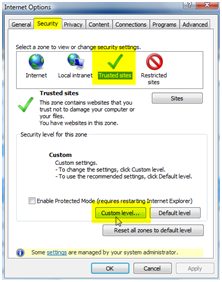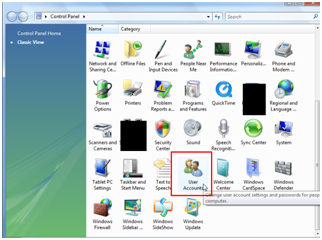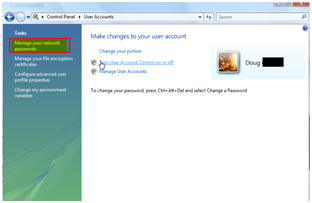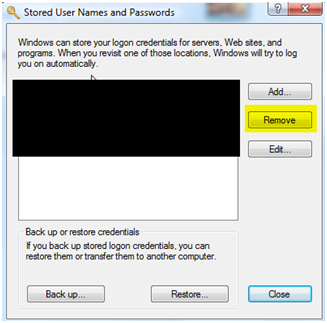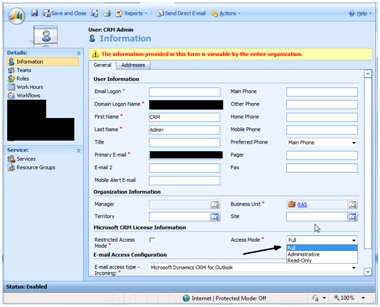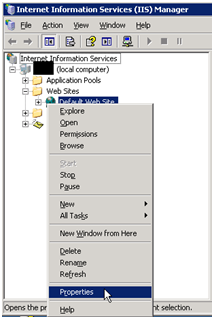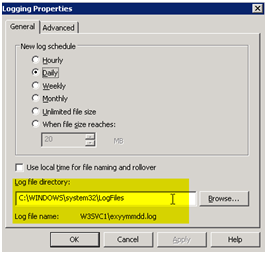Last week the Microsoft CRM Support Team released a fantastic blog outlining common Outlook CRM Client issues and fixes to those issues. This post also included some additional troubleshooting information around configuration issues, login issues and responsiveness issues.
While their blog post was certainly thorough, it lacked a bit in terms of clarity and cohesion. Experienced CRM administrators would be able to decipher the information but it was slightly lacking for the end user. No pictures, no clear instructions for which programs and services to run, etc.
It is with these limitations in mind that I present to you: The Outlook CRM Client Troubleshooting Guide 'For The Rest Of Us!'

We will focus on 3 areas:
1. Client Configuration Issues
2. Login Issues
3. Outlook Add-In Issues
Troubleshooting Client Configuration
Check Managed Passwords:
If you've upgraded from the 3.0 Client:
Method 1: If you have Microsoft Office Outlook 2007 installed
- Start Outlook 2007.
-
On the Tools menu, click Account Settings.
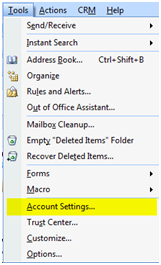
-
Click the Data Files tab, Click Microsoft CRM, and then click Remove.
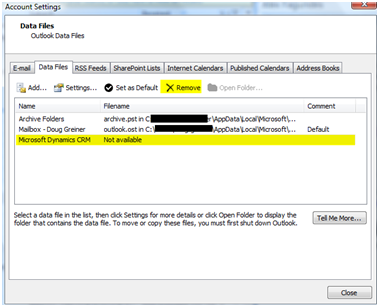
-
Click the Address Books tab, Click Microsoft CRM Address Book, and then click Remove.
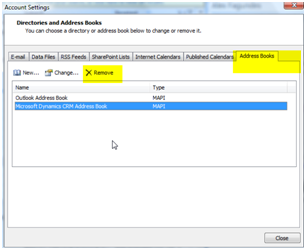
- Exit Outlook 2007.
Method 2: If you have Microsoft Office Outlook 2003 installed
- Exit Outlook 2003.
- Click Start, click Control Panel, click User Accounts, and then click Mail.
- In the Mail Setup dialog box, click Data Files.
- Click Microsoft CRM, click Remove, and then click Close.
- In the Mail Setup dialog box, click E-mail Accounts.
- Click View or change existing directories or address books, and then click Next.
- Click Microsoft CRM Address Book, and then click Remove.
- Click Close to close the Mail Setup dialog box.
- If still failing: Uninstall 3.0, uninstall and reinstall CRM 4.0.
Permissions Issues when configuring:
Active Directory DNS Issues:
Check the Deployment Properties:
You may have an issue with MAPI .
This is not as frequent, and this would be a last step.
Login Issues
Check the URL you are using:
Check Managed Passwords as in the Client Configuration section
Permissions may be causing a problem:
-
First, check the Permissions on the Security Role
- Turn on Platform Tracing and Reproduce the Issue.
- Search the Platform Trace Logfile for any CrmCheckPrivilege errors. It will resemble the following:
CrmCheckPrivilege failed. Returned hr = -xxxxxxx on UserId: {SOME USER ID GUID} and PrivilegeId: {SOME PRIVILEGE GUID}
-
If permissions are missing, look in the Organization database with SQL Server Tools to determine which Privilege is missing.
-
On the User Record in CRM, check the Access Mode and see if it is set to Administrative Mode, and if it is, change it to Full

-
If there could be a permission issue on the Website in IIS. Look at the IIS Logs after reproducing the issue.
Do you have any 3rd Party Addin's?
- Do you have the latest updates to other Addin's?
- Temporarily disable 3rd party Addin's to find the Addin that is causing the issues.
Check the IFD Settings to see if it is enabled:
- Setup IFD if accessing externally. Using the Microsoft Dynamics CRM Client for Outlook over the internet requires that IFD be enabled.
- More info on IFD here (http://www.microsoft.com/downloads/details.aspx?familyid=3861E56D-B5ED-4F7F-B2FD-5A53BC71DAFC&displaylang=en)
CRM Outlook Add-in Responsiveness
Apply the latest Update Rollup for Microsoft Dynamics CRM 4.0
Disable other Outlook Add-ins to see if the issues still occur.
- Start enabling the Add-ins one at a time to find out what Add-ins are causing the issues.
- Check to see if there are any new updates for the Outlook Add-ins that are installed on the client machine. We have seen issues where older versions of some Outlook Add-ins have caused issues with Microsoft Dynamics CRM.
Gather a crash dump or hang dump to send into Technical Support using the ADPlus Tool at http://support.microsoft.com/kb/286350
ADPlus is a tool that will allow us to get a memory dump from a process that is giving you problems. To get this tool, please install the most current version of "Debugging Tools for Windows" from http://www.microsoft.com/whdc/devtools/debugging/default.mspx
Once these tools are installed, do the following:
1. Create a directory called c:adplus
2. Open a command prompt and change to the directory where you installed the debugging tools. By default, this is c:Program FilesDebugging Tools for Windows
3.a. Crash Dump - If Outlook crashes (restarts or the Outlook.exe process disappears), then a crash dump is required. This can be captured using the following commands and needs to be run before the Outlook crash occurs.
To capture a Crash Dump type the following:
cscript adplus.vbs -crash -pn Outlook.exe -o c:adplus
Note: a WARNING window will pop-up regarding debugging symbols - click OK
3b. Hang Dump - If Outlook is hanging or non-responsive to mouse clicks or keyboard commands for at least a minute or more than a hang dump may be required to troubleshoot the issue and can be captured using the steps below. The hang dump is a point in time capture and must be performed after the hang has occurred. Do not perform the steps to capture a hang dump before the problem has occurred, but after the Outlook.exe process has hung.
To capture a Hang Dump type the following:
cscript adplus.vbs -hang -pn Outlook.exe -o c:adplus
Note: A WARNING window will pop-up regarding debugging symbols - click OK
Note: It is best to take three different Hang Dumps usually 30-60 seconds apart from each other.
4. Do not interfere with the windows that are opened, just let it run minimized.
5. You will not be able to log off the system while you are monitoring.
6. After the hang/crash occurs, please zip and send the contents of the c:adplus directory.
If help is required with these procedures, please open a support case.
Final Words
Troubleshooting the Outlook client can be a daunting task when one considers the sheer amount of components that are working together to create a seamless work environment. Hopefully this blog was able to provide some assistance with isolating and fixing issues with the Outlook CRM client. All we focus on here at PowerObjects is Microsoft Dynamics CRM; it is our passion. If you were unable to solve your issue using this guide, we are available on a time and materials basis to dig in and solve any issue that you may be experiencing. Please contact us and let us know how we can bring focus to your Dynamics CRM!

 How Microsoft Power Platform is helping to modernize and enable...
How Microsoft Power Platform is helping to modernize and enable... Deliver an Extraordinary Omnichannel Experience
Deliver an Extraordinary Omnichannel Experience Data Interoperability Key to Improving the Patient Experience
Data Interoperability Key to Improving the Patient Experience


